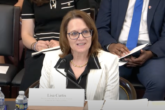January 23, 2019
What North Korea wants from the next US summit
Following their historic meeting in Singapore last June, North Korean leader Kim Jong-un and US President Donald Trump are preparing for another summit in late February. Their negotiators are now working on what the two heads of state might discuss and agree on. The big-picture goal on the US side is to convince Pyongyang to completely give up its nuclear weapons program. North Korea’s goals are more complex, and negotiations will get even trickier this year.
Kim Jong-un’s aims and likely negotiating tactics for the next summit can be gleaned from two recent events. First, the North Korean leader’s New Year’s speech on January 1 gave a sense of his game plan. Second, his summit with Chinese President Xi Jinping in the second week of January served as a first step in operationalizing that plan, and offered further clues on how he will try to achieve his ambitions. Together they show a leader who will work fervently to negotiate a peace regime that replaces the Korean War armistice; denuclearize the entire Korean Peninsula (not just the North); and create the conditions for one Korea unified under the North Korean flag, a national objective dating back to his grandfather Kim Il-sung. All three goals share a common denominator: Kim wishes to break the US-South Korea alliance and eventually rid the peninsula entirely of the American presence.
Kim on the year ahead. After a chaotic 2017 during which Trump and Kim threatened each other and their countries with nuclear annihilation, Kim began 2018 with a peace offensive, participating in the Winter Olympics in Pyeongchang and expressing a desire for better relations with Seoul. As of the beginning of 2019, he is pushing the peace campaign to new heights and using it to craft a public image of himself as a peacemaker, in an effort to get US and UN sanctions on his country lifted. But Kim’s speech also made clear that US and North Korean definitions of peace do not necessarily correspond.
Read the full article in Bulletin of the Atomic Scientists.
More from CNAS
-
Assessing the Terror Threat Landscape in South and Central Asia and Examining Opportunities for Cooperation
Watch...
By Lisa Curtis
-
Indo-Pacific Security / Energy, Economics & Security
What Will North Korean Cybercrime Look Like in 2022?North Korean hackers will likely continue to employ more phishing campaigns in the future while tailoring their level of obfuscation based on the target’s sophistication....
By Jason Bartlett
-
Duyeon Kim testifies before European Parliament's Committee on Foreign Affairs
Chairman McAllister, Vice Chairs, DKOR Chairman Mandl, and distinguished Members of the Committee on Foreign Affairs and the European Parliament, thank you for the opportunity...
By Dr. Duyeon Kim
-
China’s New Land Borders Law Is a Nightmare for North Korean Refugees
A combination of high-level pressure from foreign governments and steady support for grassroots refugee resettlement organizations and programs is the most practical way to as...
By Jason Bartlett


